INTERNACIONAL
Hegseth, Signal questions dog Waltz as potentially perilous UN ambassador confirmation hearings loom

The same day that National Security Advisor Mike Waltz exited his job at the White House, President Donald Trump announced a new job offer for the former Florida congressman: United Nations ambassador.
But there are some hurdles Waltz must clear first before the New York job is his — including undergoing a Senate confirmation process amid scrutiny after the Atlantic magazine exposed a Signal group chat that his team had set up to discuss strikes against the Houthis in March.
And receiving full support from the slim Republican majority in the Senate isn’t guaranteed, and not all Republicans got on board backing Secretary of Defense Pete Hegseth. Vice President JD Vance ultimately cast the tie-breaking vote securing Hegseth’s nomination.
Democrats appear hungry to use Waltz’s nomination as a forum to air grievances against other foreign policy leaders in the Trump administration — particularly Hegseth.
NEXT US NATIONAL SECURITY ADVISOR? HERE’S WHOM TRUMP MIGHT PICK TO REPLACE WALTZ
U.S. national security advisor Mike Waltz and Secretary of Defense Pete Hegseth stand, as U.S. President Donald Trump meets French President Emmanuel Macron at the White House on Feb. 24, 2025. (Reuters/Brian Snyder)
Still, Waltz’s nomination to represent the U.S. at the U.N. will likely attract support from establishment Republicans in the Senate who weren’t on board with Hegseth in the Pentagon, given that the ideological divide between these Republicans and Waltz is much smaller than it was in Hegseth’s case, according to one Florida GOP source.
«He’s been able to thread the needle really, really well between traditional conservative foreign policy voices and the more populist America First policy voices,» the Florida GOP source said of Waltz.
HEAT ON WALTZ
Waltz, who previously represented Florida’s 6th congressional district, is a retired Army National Guard colonel and former Green Beret who served four deployments to Afghanistan and earned four Bronze Stars — the fourth-highest military combat award, issued for heroic service against an armed enemy.
While Waltz and Hegseth both were embroiled in the Signal chat discussing strike plans against the Houthis, Hegseth has attracted more of the heat, at least publicly, stemming from the incident. Democrats have called for Hegseth’s resignation as a result of the chat, but staffers at the White House — including Waltz — have openly backed Hegseth and shut down reports that the administration is seeking his replacement.
But Waltz could get his turn attracting the ire of lawmakers as Democrats find an opportunity to openly grill him in front of the Senate, amid displeasure with Trump’s foreign policy and national security agenda.
«The second hundred days of national security under President Trump will apparently be just as chaotic as the first hundred,» Sen. Chris Coons, D-Del., said in a statement to Fox News Digital about Waltz’s departure from the White House.
«President Trump’s consistent hirings, firings and upheaval sap morale from our warfighters and intelligence officers, degrade our military readiness, and leave us less prepared to respond to threats from our adversaries,» Coons said. «American citizens at home and around the world are less safe because of President Trump’s non-existent national security strategy.»
Sen. Tammy Duckworth, D-Ill., also took aim at Waltz — although she labeled Hegseth the worst offender affiliated with «Signalgate.»
MIKE WALTZ, OTHER NATIONAL SECURITY COUNCIL STAFFERS OUT IN LATEST TRUMP PURGE FOLLOWING SIGNAL CHAT LEAK
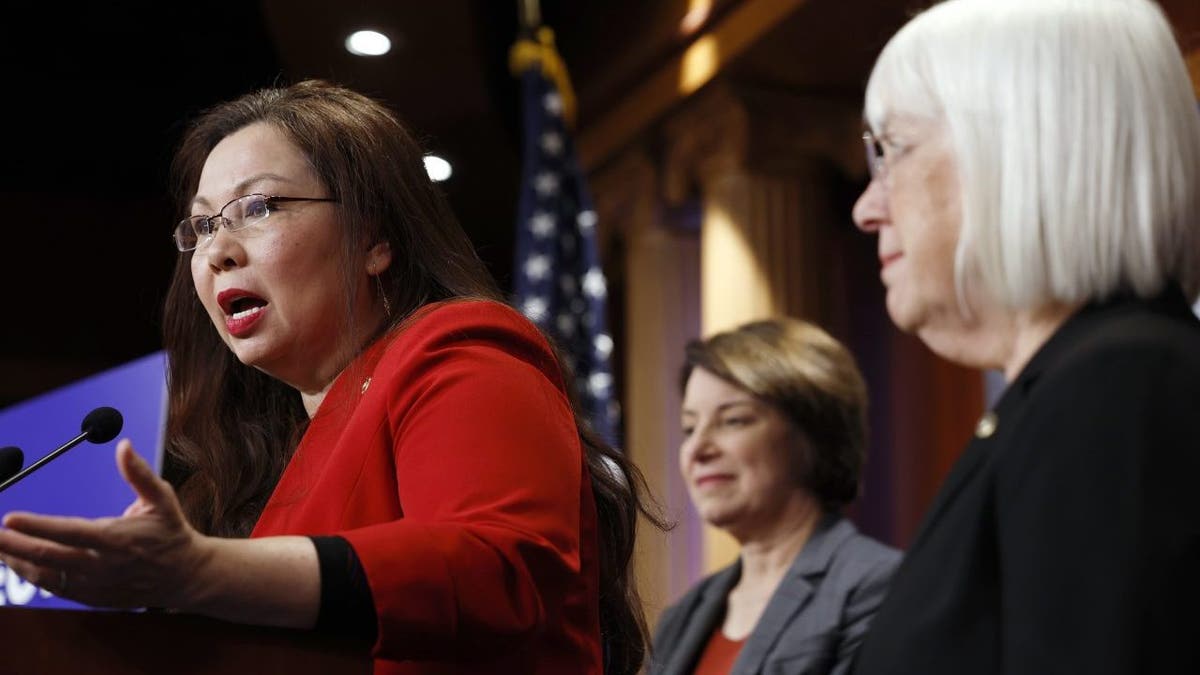
Sen. Tammy Duckworth, D-Ill., also took aim at former National Security Advisor Mike Waltz — although she labeled Secretary of Defense Pete Hegseth the worst offender affiliated with «Signalgate.» (Anna Moneymaker/Getty Images)
«Took them long enough. Mike Waltz knowingly made an unclassified chain to discuss classified matters,» Duckworth said in a Thursday X post ahead of Waltz’s U.N. ambassador nomination. «But of all the idiots in that chat, Hegseth is the biggest security risk of all—he leaked the info that put our troops in greater danger. Fire and investigate them all.»
In addition to the Signal chat, Waltz’s exit from the White House was tied to several other issues. For example, Axios reports that Waltz treated White House Chief of Staff Susie Wiles like «staff,» and his disrespect rubbed her the wrong way.
«He treated her like staff and didn’t realize he’s the staff, she’s the embodiment of the president,» a White House official told Axios. «Susie is a deeply loyal person and the disrespect was made all the worse because it was disloyal.»
Waltz reportedly discussed different roles he could take on following his stint at the White House with Wiles, according to CBS News. Waltz was reportedly offered jobs, including the ambassador to Saudi Arabia, but ultimately settled on U.N. ambassador.
A spokesperson for the National Security Council did not immediately respond to a request for comment from Fox News Digital.
NEXT STEPS
With Waltz out as national security advisor, Secretary of State Marco Rubio will temporarily step into that role.
While Trump originally nominated Rep. Elise Stefanik, R-N.Y., to represent the U.S. at the U.N., he rescinded her nomination in March, citing that the House could not afford to lose another Republican seat.
Stefanik’s nomination lagged in the Senate in comparison to other U.N. ambassador nominees, including Trump’s first U.N. ambassador and former South Carolina Gov. Nikki Haley. The Senate confirmed Haley in January, just after Trump’s first inauguration.
While the exact timeline for a potential confirmation vote in the Senate is unclear, the first hurdle that Waltz must clear is a confirmation vote out of the Senate Foreign Relations Committee. Although it is uncertain when the Senate Foreign Relations Committee will schedule the nomination hearing for Waltz and the subsequent vote, the committee said his nomination is a «priority.»
«The committee has been working at a historically fast pace and this nomination will be a priority moving forward,» a GOP staffer on the Senate Foreign Relations Committee told Fox News Digital.
CLICK HERE TO GET THE FOX NEWS APP
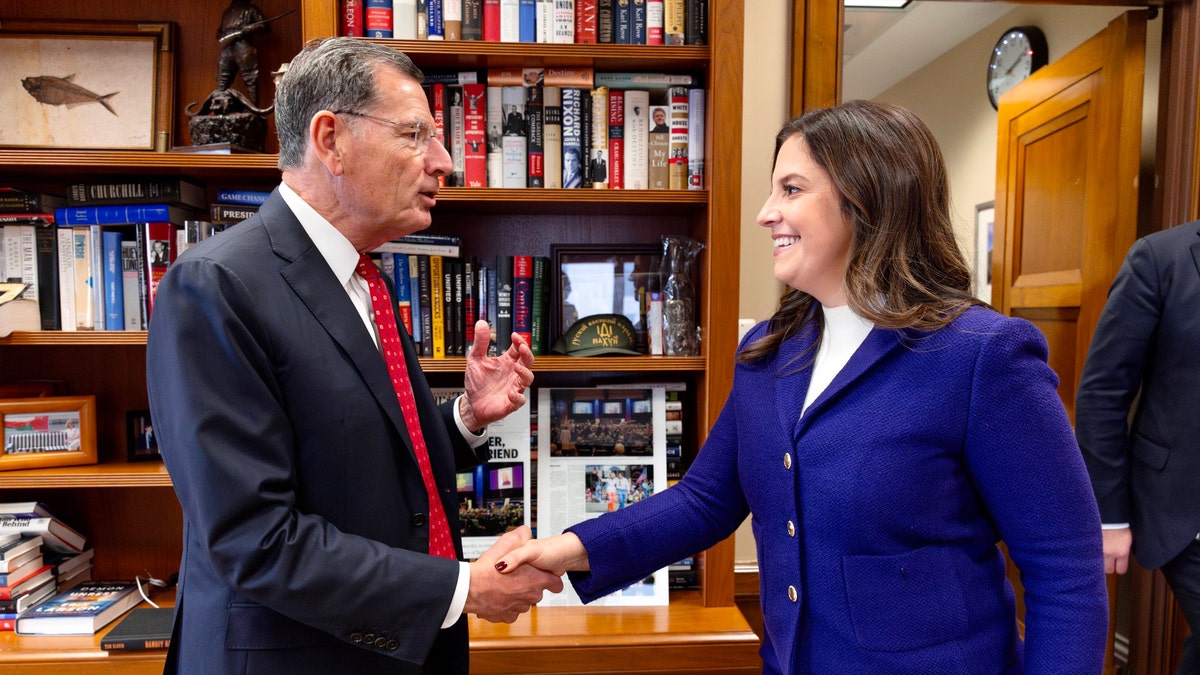
Rep. Elise Stefanik, R-N.Y., meets with Republican Sen. John Barasso of Wyoming. (Office of Rep. Elise Stefanik)
The 80th session of the U.N. General Assembly is scheduled for September 9, so there are a few months for Waltz’s confirmation to play out, the Florida GOP source said. That means that Waltz could take a few months off, start the confirmation process in June or July and wrap up his confirmation by September at the latest, the source said.
«He’s got plenty of time. So, this isn’t a looming fight that’s going to happen next week,» the Florida GOP source said. «This is going to play out probably in June or July, which by then, people are going to forget about the Signalgate stuff, or at the very, very least, they’re going to forget about Mike Waltz’s role in it.»
But there are a few Republican wildcards in the Senate who have voted against several of Trump’s nominees, most prominently Sen. Mitch McConnell, R-Ky., who voted against Hegseth, Secretary of Health and Human Services Robert F. Kennedy Jr., Director of National Intelligence Tulsi Gabbard and Secretary of Labor Lori Chavez-DeRemer.
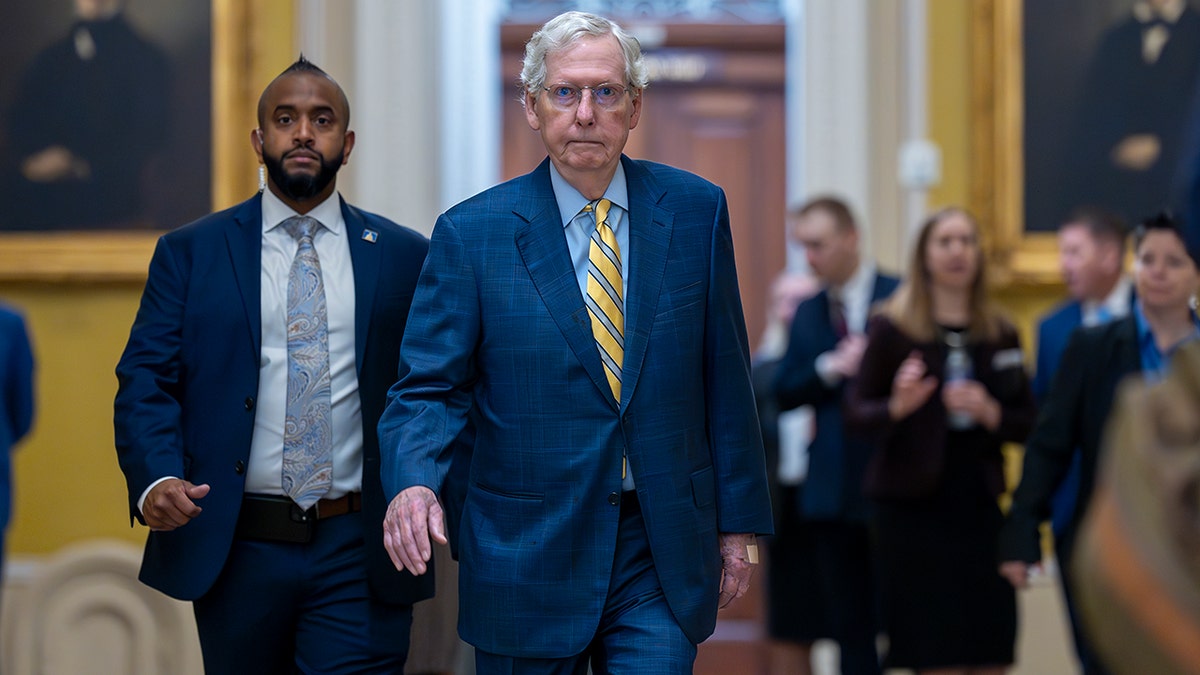
Sen. Mitch McConnell, R-Ky., voted against Secretary of Defense Pete Hegseth in January. (J. Scott Applewhite/the Associated Press)
A spokesperson for McConnell did not respond to a request for comment from Fox News Digital.
Other Republicans who have opposed Trump nominees include Sens. Lisa Murkowski of Alaska, Susan Collins of Maine, both of whom voted against Hegseth, as well as Sens. Ted Budd of North Carolina and Rand Paul of Kentucky, both of whom voted against Chavez-DeRemer.
Aside from former Rep. Matt Gaetz, R-Fla., whom Trump initially nominated to serve as attorney general, Trump’s entire cabinet has been approved. Gaetz withdrew his nomination amid a House Ethics Committee investigation into sexual misconduct and drug-use allegations.
Despite opposition from Democrats, and possibly a few Republicans, it appears unlikely that any fire that Waltz will face will sink his nomination.
«The reality of it is, the president can lose three votes in the Senate, and the vice president can still vote to break a tie,» the Florida GOP source said. «There’s no way he’s probably going to lose three votes.»
Meanwhile, other Republicans have openly stated they endorse Waltz’s nomination, including Senate Foreign Relations Chairman John Risch, R-Idaho, who lauded Trump’s decision to nominate Waltz for the role.
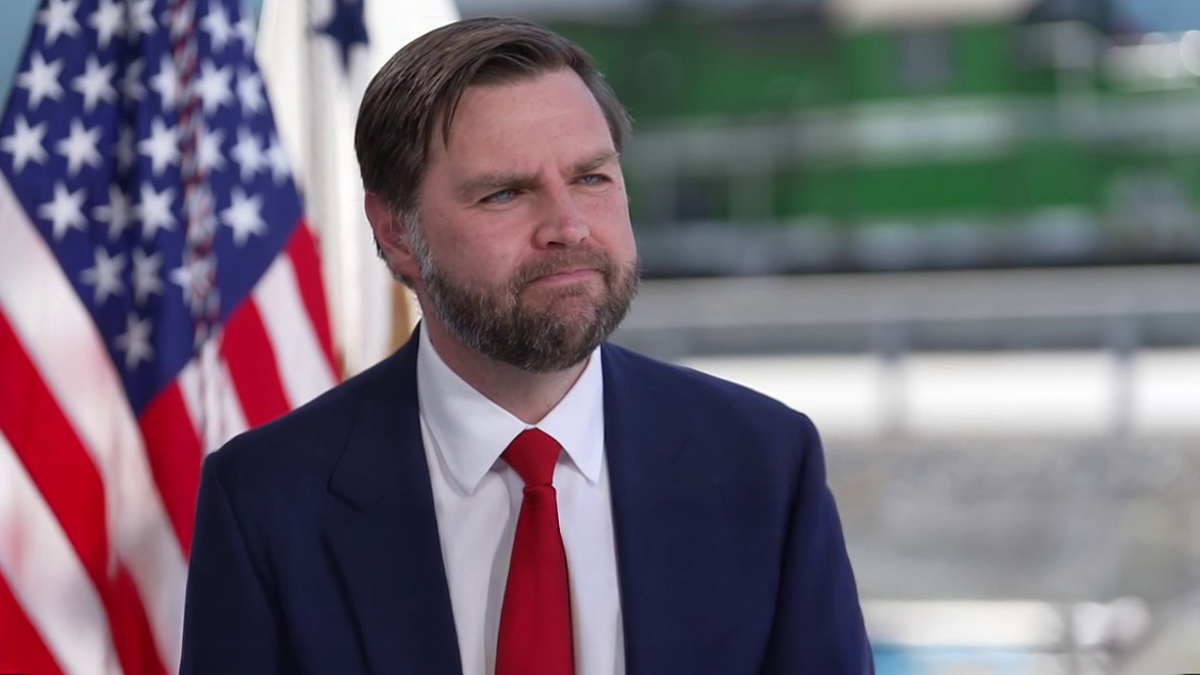
Vice President JD Vance sits for an interview with Fox News’ chief political anchor Bret Baier in South Carolina, where he addressed Waltz’s nomination to represent the U.S. at the United Nations. (Fox News/Special Report)
«Great choices. America is safer and stronger under President Trump and his national security team,» Risch said in a Thursday X post. «I thank Mike Waltz for his service as NSA, and look forward to taking up his nomination in our committee.»
Sen. Lindsey Graham, R-S.C., also posted on X on Friday that Waltz would be confirmed «for sure.»
Vance also voiced support for Waltz and billed the nomination as a «promotion,» pushing back on any suggestions that Waltz’s removal amounted to a firing.
«Donald Trump has fired a lot of people,» Vance said in an interview with Fox News’ Bret Baier Thursday. «He doesn’t give them Senate-confirmed appointments afterward. What he thinks is that Mike Waltz is going to better serve the administration, most importantly, the American people in that role.»
Fox News’ Charles Creitz contributed to this report.
White House,Pete Hegseth,U.S. Defense & Military Politics,Secretary of Defense,Donald Trump
INTERNACIONAL
“Tuvimos altas y bajas”: así regresa el deporte a la UNAM entre nostalgia, miedo y cubrebocas

Después de dos años desde el inicio de la pandemia por COVID-19 en México, la Universidad Nacional Autónoma de México (UNAM) volvió a tener a su comunidad en las aulas, incluidas el deporte. Fue en septiembre de 2021 cuando se anunció el regreso paulatino a clases, pero fue hasta el semestre de enero 2022 cuando la comunidad universitaria volvió a ocupar la mayoría de los espacios físicos.
En ese lapso, el deporte representativo y de esparcimiento de la universidad tuvo que adecuarse a los cambios del semáforo epidemiológico y las restricciones de la misma UNAM para seguir con su actividad y estar lo mejor preparados para el regreso a las instalaciones.
En entrevista con Infobae México, Valentín Albarrán Ullola, director de cultura física de la Dirección General del Deporte Universitario (DGDU), contó cómo es que se planteó la reanudación de las diferentes actividades deportivas de manera presencial, tanto de competencias universitarias así como las recreativas para todos los pertenecientes a la máxima casa de estudios.

Estuvieron sujetos a las normas sanitarias que autorizaba la UNAM y la Secretaría de Salud en México. Fue en junio del 2021 cuando se permitió el regreso paulatino del 30% para los equipos representativos con la ilusión de iniciar su calendario de competencias de la CONADE y del CONDDE (Consejo Nacional del Deporte de la Educación).
Una vez que hubo una reducción significativa de contagios a nivel nacional, a principios de mayo de 2022 se permitió un aforo del 100% para realizar actividades en espacios abiertos, mientras que en duelas, gimnasios y demás instalaciones cerradas aún permanece una reducción del 60 por ciento.
La realización de pruebas, desinfección del espacio y el uso de cubrebocas fueron elementos básicos en el reinicio de las actividades.
La DGDU les proporcionó a los entrenadores y atletas un kit de higiene y demás utilería para protegerse del coronavirus, además el espacio del Estadio Olímpico brindó pruebas gratuitas para que los atletas pudieran reunirse con sus equipos con la garantía de no estar contagiados, de acuerdo con el testimonio de Oswaldo Soto, entrenador del grupo de animación y porras de Pumas UNAM.
Oswaldo Soto contó a Infobae México cómo fue su regreso a las actividades presenciales con su disciplina. Lo primero que realizaron fue una planeación detallada para volver a ocupar el campo “El Arrancadero” de Ciudad Universitaria.

“Tuvimos que meter nuestro programa de trabajo para que lo puedan autorizar bajo el lineamiento del director y si no le gustaba, nos regresaba para modificar nuestro plan de trabajo”.
Para agosto de 2021 pisaron por primera vez el campus desde el cierre de la UNAM, inició las sesiones con un grupo reducido de cinco personas, después pasó a 10 porristas y así fueron creciendo sus grupos hasta tener a todos. A mediados de octubre de 2021 llevaron a cabo un sistema híbrido, es decir actividades en línea y presenciales por cada semana.
Al inicio entrenaron con el uso cubrebocas, conforme el semáforo epidemiológico se mantuvo en verde, ya no fue imprescindible y se volvió de libre uso. La campaña de vacunación ayudó a crear un espacio de seguridad y protección entre los atletas, por lo que el recibimiento de la comunidad estudiantil fue favorable.
Cabe destacar que no todas reactivaron la presencialidad pues de las 83 disciplinas oficiales, solo regresaron las que podían entrenar al aire libre y con aforos reducidos, de acuerdo con Albarrán Ullola.
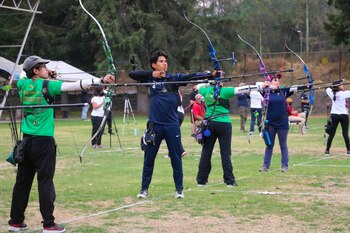
Algunas de las primeras en volver fueron: fútbol soccer, americano, basquetbol, rugby, remo, canotaje, ciclismo, béisbol, voleibol de playa, grupos de animación, entre otros.
Otros casos tuvieron que migrar a nuevos espacios que les permitiera entrenar al aire libre, tal pasó con el grupo de porras de la Prepa No. 6, ya que al no contar con el espacio adecuado, y a causa del calendario escolar, tuvieron que acudir a Ciudad Universitaria, según relataron Karla Mosqueda y Alan Valle, entrenadores de la Preparatoria Antonio Caso, a este medio.
Para febrero de 2022 empezaron mayores actividades dirigidas a la comunidad estudiantil general, principalmente en el nivel licenciatura en Ciudad Universitaria, Facultades de Estudios Superiores (FES) y algunos planteles de nivel bachillerato (Escuelas Nacionales Preparatorias y CCHs), siempre y cuando el protocolo de cada plantel lo permitiera.

Por parte de la DGDU retomaron el fomento de la cultura del deporte en los planteles, precisó Valentín Albarrán. Se retomaron las actividades recreativas y de preparación para las y los estudiantes al 100 por ciento. En el campus principal conocido como “Las Islas” volvieron las sesiones de esparcimiento para toda la comunidad.
“Tenemos el espacio deportivo Puma en Ciudad Universitaria de planta, de miércoles a viernes de 12:00 a 16:00 hrs con diferentes actividades como yoga, activación lúdica deportiva, combate medieval, baile, una serie de actividades para todos los universitarios”, explicó el director de cultura física.
Además por medio de redes sociales y por la Gaceta UNAM empezaron a invitar a los estudiantes a integrarse a las sesiones deportivas que se programaban semanalmente.
En cuanto al uso de la alberca olímpica y el gimnasio de pesas, ambos tuvieron reparaciones y cambio de mobiliario para estar en óptimas condiciones. Se espera que para el mes de julio la comunidad pueda retomar sus clases, todo con previa cita tramitada en la Red Puma en línea.

“Estamos a un 90% de volver a la normalidad”, aseveró Valentín.
En cuanto los equipos mayores de la UNAM, de facultades, prepas y los colegios de humanidades tuvieron la autorización de volver, reunieron a sus deportistas para prepararse para competencias futuras, en el caso de los representativos se trató de la Universiada Nacional, mientras que dentro de la UNAM se trató de torneos interprepas, interfacultades y demás.
Y dentro de los obstáculos que se presentaron fueron: la reagrupación de equipos, retomar la confianza entre compañeros y el factor psicológico. Tanto el director de cultura física como Oswaldo Soto coincidieron en que la pandemia orilló a que los deportistas que no viven en la Ciudad de México regresaran a sus lugares de origen, por lo que no todos pudieron incorporarse rápidamente.

Además los cambios generacionales provocaron modificaciones en los equipos representativos, así lo detalló el también entrenador del grupo de porras de la Facultad de Ciencias Políticas y Sociales:
“Como cualquier deporte tuvimos altas y bajas con la pandemia; yo tuve bajas de 175 me pasé a 80 atletas en total y cuando regresamos a presencial, pasando liga mayor, tuvimos altas en cuestión de matrícula, de 85 pasamos a casi 180-190″.
Una vez que se reencontraron, los entrenadores fueron asesorados por la DGDU para reincorporarse a sus actividades en la nueva normalidad y erradicar el miedo al contacto con el otro.
“Lo que buscó el coach fue generarnos confianza para poder regresar y volver a sentir la seguridad de estar fuera. Fue manejándolo con los ejercicios: ‘Si puedes realizar esto es porque estás sano’“, fue el testimonio de María Ofelia Huerta Reyes, porrista de Pumas UNAM y estudiante de la Facultad de Derechos.
Y es que entre el miedo a contagiarse, la nostalgia por haber perdido dos años, el encierro y la nueva normalidad fueron factores psicológicos que afrontaron los deportistas y la comunidad estudiantil en general por la falta de interacción y actividades de recreación:

“Notamos que hubo un incremento en los índices de depresión entre los estudiantes, ha habido una amplia participación de distintas entidades de la UNAM, en nuestro caso darles actividades deportivas que promuevan la socialización y eleven los niveles de serotonina y endorfina con la actividad física”, expresó Valentín Albarrán.
Mientras que en el caso de practicar un deporte y estar expuestos a un contagio, el entrenador en jefe del equipo representativo de Pumas UNAM explicó: “Ya no hay miedo pero sí son conscientes de que puede pasar”.
La parte más beneficiada del regreso fue la propia comunidad de la UNAM ya que además de hacer un hábito la actividad física, el espacio universitario se volvió parte fundamental de su desarrollo personal.
“Me llena de nostalgia, el regresar, estar aquí. Me llena de calidez el poder estar aquí, mi experiencia con este deporte ha sido como estar en una familia y el estar sin esto, para mí fue muy fuerte”, apuntó Huerta Reyes.
Aunque el deporte universitario retomó su rumbo, atletas como Ofelia consideraron que los dos años perdidos no se recuperarán en los próximos meses, sino será un proceso largo que se logrará en equipo. “Todavía nos falta para volver a tener el vínculo de confianza que habíamos generado antes de la pandemia, pero siento que vamos en un buen camino para volver a ser el Pumas UNAM de 2019″.
SEGUIR LEYENDO:
INTERNACIONAL
La abrupta y escandalosa ruptura entre Donald Trump y Elon Musk amenaza sus intereses: ¿Qué pierde cada uno?
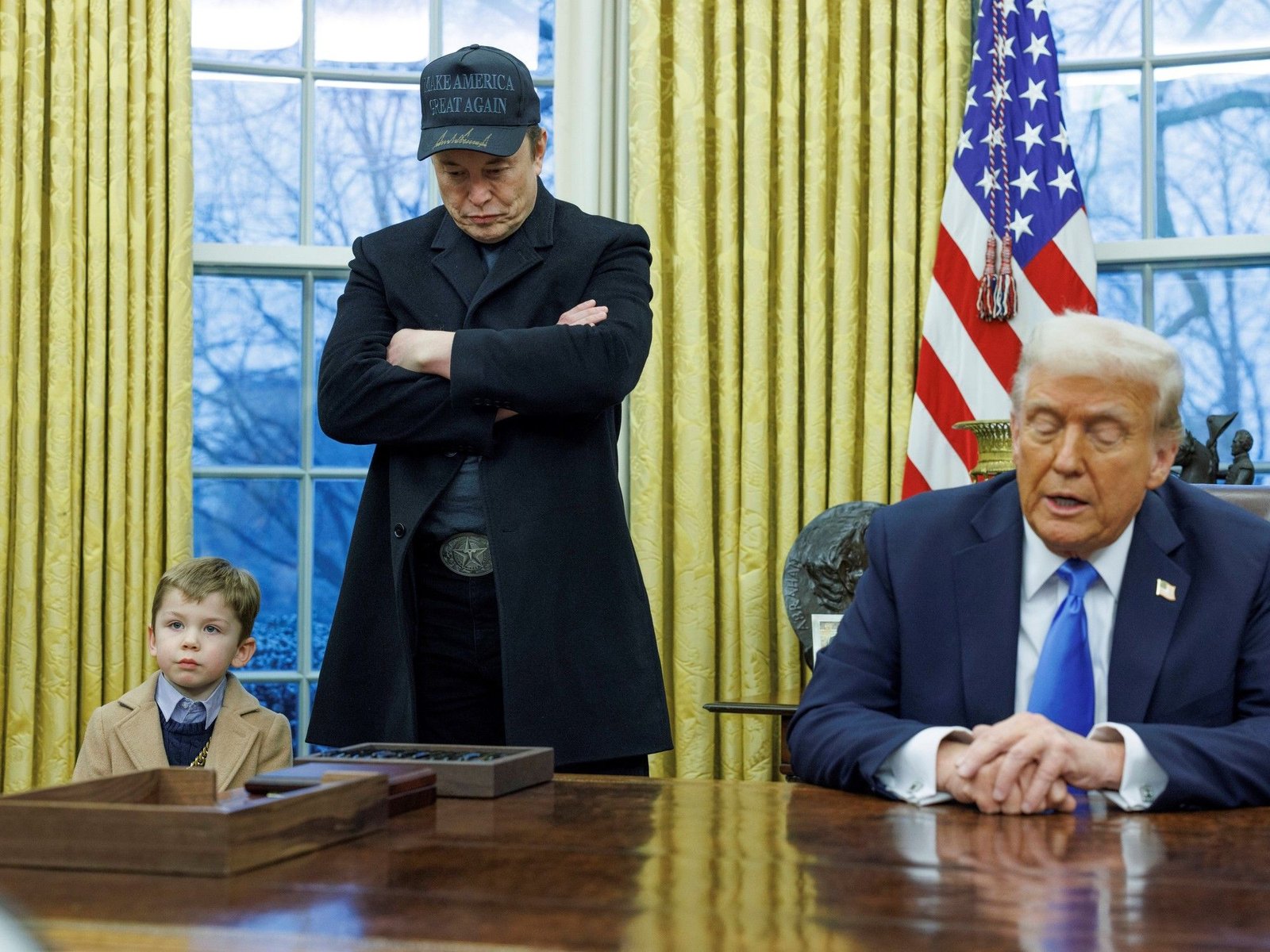
Contratos multimillonarios de Musk, en el aire
Regulaciones federales
Posible impacto en el «gran y hermoso» proyecto
Consecuencias en la élite tecnológica
INTERNACIONAL
Trump ally stands firm against ‘big, beautiful bill’ despite pressure: ‘It’ll completely backfire’

NEWYou can now listen to Fox News articles!
EXCLUSIVE — One of the leading opponents of President Donald Trump’s «big, beautiful bill» declared not even the commander in chief will be able to deter him from speaking out against what he sees as a bill that falls short of Republicans’ goal of cutting government waste.
«It’ll completely backfire on him,» Sen. Ron Johnson, R-Wis., told Fox News Digital of any attempts by Trump to sway him on the current legislation.
Johnson has become a prominent voice of opposition against the House GOP’s offering to the budget reconciliation process. Senate Republicans finally began the tedious process of parsing through the bill this week.
‘HE’S NOT A BIG FACTOR’: TRUMP’S SENATE ALLIES DISMISS ELON MUSK’S CALLS TO ‘KILL THE BILL’
Sen. Ron Johnson says not even President Trump can sway him on the «big, beautiful bill.» (Getty Images)
Lawmakers in the upper chamber, Johnson included, are determined to make changes to the bill, with most wanting to make reductions to Medicaid and food stamps more palatable. Trump has made it clear his bill must pass but has acknowledged the Senate will need to make a few changes.
Trump’s directive has been to deliver a bill that can survive the razor-thin majorities in both chambers.
Johnson, however, wants to see spending returned to pre-pandemic levels, cuts that are trillions of dollars deeper than what House Republicans could stomach. And he is ready to vote against the bill unless he sees the changes he wants.
And he believes that a pressure campaign from the president against him and other like-minded fiscal hawks will fail.
He said a better approach would be to work with lawmakers and fiscal hawks like him to gain a better understanding of the reality of the country’s fiscal situation, a reality that «is grim,» he said.
SEN. RON JOHNSON PROPOSES ‘LINE-BY-LINE’ CUTS TO PASS TRUMP’S ‘BIG, BEAUTIFUL BILL’
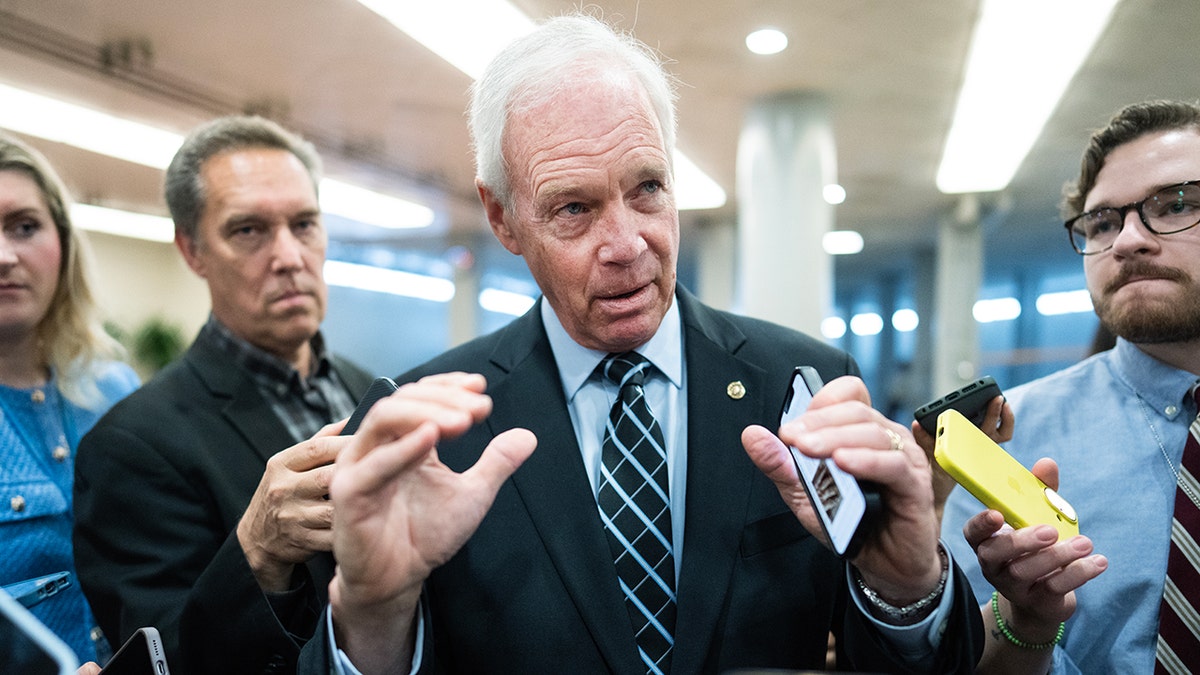
Sen. Ron Johnson, R-Wis., talks with reporters in the U.S. Capitol after the House passed the One Big Beautiful Bill Act May 22, 2025. (Tom Williams/CQ-Roll Call, Inc via Getty Images)
NATIONAL DEBT TRACKER: AMERICAN TAXPAYERS (YOU) ARE NOW ON THE HOOK FOR $36,214,501,400,213
Johnson has been up front about his disdain for the bill but has so far avoided public retribution from Trump. In fact, the two have spoken twice this week, once on Monday and later during a Senate Finance Committee meeting at the White House Tuesday.
The lawmaker has told Trump he’s in Trump’s corner and that he wants «to see you succeed,» but he has been steadfast in his position that the bill does not go far enough to tackle the national debt.
And the debt continues to climb, nearing $37 trillion and counting, according to Fox News’ National Debt Tracker.
The House’s offering set a goal of $1.5 trillion in spending cuts over the next decade, which lawmakers in the lower chamber have pitched as a positive step forward to righting the country’s fiscal ship, an offering Johnson panned as falling drastically short of the GOP’s promises to cut deep into government spending.
«What’s so disappointing about what happened in the House is it was all rhetoric. It’s all slogans,» Johnson said. «They picked a number. Literally, they picked a number out of the air.»
GOP SENATORS EXPRESS ‘CONCERNS,’ ‘SKEPTICISM’ OVER TRUMP’S SPENDING BILL AFTER MUSK RANT
Johnson views this attempt at the budget reconciliation process as a rare opportunity to «do the hard things» when it comes to spending cuts, but others in the GOP have been more hesitant to cut as deep.
Johnson said a main reason Republicans have so far fallen short of meeting the moment for the most part is that lawmakers don’t understand just how much the federal government shovels out the door year in and year out.
The lawmaker recalled a moment roughly three years ago during a debate over another year-end omnibus spending bill, when each of the dozen appropriations bills is crammed into one, bloated package that is universally reviled and almost always passes.
He asked his colleagues if they really knew just how much the government spends, and no one «volunteered to answer.»
«Nobody knew. I mean, think of that. The largest financier in the world. We’re supposedly, in theory, the 535 members of the board of directors, and nobody knew,» he said. «Why would they? We never talked about it.»
CLICK HERE TO GET THE FOX NEWS APP
Johnson has been busy trying to better educate his colleagues, putting together his own charts and graphs that cut out the «noise,» like the latest nonpartisan Congressional Budget Office report that found the legislation would add $2.4 trillion to the national debt over a decade. The GOP has universally panned that projection.
«We can’t accept this as a new normal,» Johnson said. «We can’t accept — you can take pot shots of CBO, but you can’t deny that reality. [It] might be off a little bit, but that is the trajectory, and that’s undeniable.»
-

 POLITICA1 día ago
POLITICA1 día agoCristina Kirchner advirtió que la pueden “meter presa” y lo relacionó con su candidatura a diputada provincial
-

 ECONOMIA2 días ago
ECONOMIA2 días agoUn proyecto de u$s100.000 millones: claves del acuerdo entre Milei y Meloni para exportar gas de Vaca Muerta
-

 POLITICA2 días ago
POLITICA2 días agoTras la muerte de Thiago, Patricia Bullrich redobló su defensa del policía y pidió perpetua para los tres ladrones






























